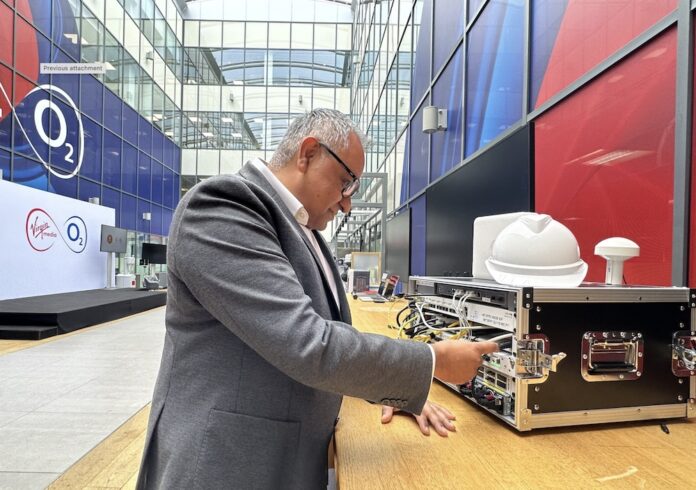Slightly larger than a carry-on airline bag, although weight restrictions vary by airline
Virgin Media O2 Business has launched a portable commercial 5G Standalone (SA) private network giving businesses of all sizes a way to tap into a secure 5G network quickly without needing to build a network.
Since the first trials of the portable solution, the telco has developed and deployed two 5G SA private network platforms. Telefónica’s innovation arm, Wayra – home to the first trial of this product – has been using the network since last summer, enabling customers and small businesses to experience 5G SA enabled applications first-hand.
Startups based in Wayra’s London office are using it, including Mobilus Labs, an organisation using advanced voice technology to enable industrial teams to communicate in environments with extreme noise (85 dB+).
VMO2 said further trials with companies offering products ranging from VR applications to IoT services have already shown benefits including high reliability, enhanced data security, and ultra-low latency.
These applications and features are utilised using Nokia’s Digital Automation Cloud (DAC) and MX Industrial Edge (MXIE) – VMO2 claims to be the UK’s first telco to incorporate MXIE into its private wireless offering. With on-premises edge cloud capabilities, enterprises can process data at the source in real-time, meaning business-critical applications do not need to communicate back to an application in the public cloud.
“Moving beyond trials, Virgin Media O2 Business is now the UK’s first telco to offer a portable commercial 5G Standalone private network,” said VMO2 Business MD Jo Bertram. “From start-ups to large enterprises, our latest network solution will enable 5G trials and deployment without the time or cost of building a whole network.”
Mobilus Labs CTO Tony Blackburn said: “Having trialled Virgin Media O2 Business’s solution, we believe it will enable mobiTALK, our Push-To-Talk smart phone application, to offer a seamless customer experience.”
Nokia UK&I CEO Phil Siveter said: “We have also extended our expertise to more than 635 private wireless customers worldwide. We have developed Nokia Digital Automated Cloud and MXIE to help enterprises achieve their economic, environmental, and operational goals in the most intuitive way. This private wireless network delivers on high resilience, performance, and security as part of the OT Edge, helping to accelerate enterprise adoption of OT transformation.”
Wayra UK MD Bruno Moraes said: “This plug-and-play private network unlocks reliable and low-cost connectivity for those industries whenever and wherever they need it, which is game-changing. In partnership with Virgin Media O2, we are collaborating with corporate customers and startups in these areas to test this network and build new products on the foundation of new levels of connectivity.”
Small but perfectly formed
VMO2 head of strategy, innovation and 5G IoT Sandeep Raithatha (pictured) said the unit’s size means it can support 5G connectivity in rural locations or places where public network access to 5G may be more limited.
“The portable Private Network supports both VMO2 licensed N78 [3.3–3.8GHz] and shared access N77 [3.8–4.2GHz] spectrum for indoor and outdoor, and this will be determined based on the site location,” he said. “It is now available to our customers, and we will work with them to determine how the portable solution can support their connectivity needs.”
Nokia’s MXIE platform supports a range of enterprise applications and Raithatha pointed out the telco will vary these depending on customer needs. “In past trials with South London and Maudsley NHS Foundation Trust, we have tested Augmented Reality and computer vision,” he said.
VMO2 envisages this will be used as a single node and can break out to the public internet on the customer’s site if required. “Larger more complicated sites may require a different solution,” he said.



